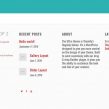
BIZ OWNERS
arnold on Oct 28, 2018
***updated 4/14/2025***
Why Marketers Need to Tag URLs
When marketers promote content across different channels—like social media posts, email newsletters, or digital ads—it’s crucial to identify precisely which activities are bringing in visitors and driving conversions. Without tagging URLs, traffic from specific marketing efforts often gets lumped into broad categories such as “direct” or “referral,” obscuring the actual source of the traffic. This lack of clarity leaves marketers guessing about which initiatives are genuinely effective.
For example, imagine running an email campaign through MailChimp announcing a special holiday sale. Without URL tagging, visitors clicking through this email might appear as direct traffic, indistinguishable from visitors typing your website URL into their browsers. Similarly, if you’re promoting a new blog post via Instagram stories and Facebook posts, it becomes challenging to determine which platform brought more visitors or conversions unless each link is uniquely tagged.
By using tracking parameters (UTM parameters), marketers gain clear insights into the effectiveness of each individual campaign or promotional effort. If your holiday email campaign generated 500 website visits and 30 sales, and your Instagram story promotion resulted in 1,000 visits but only 5 sales, you can then allocate future efforts more strategically. This precise data empowers marketers to optimize marketing budgets, fine-tune messaging, and clearly demonstrate the return on investment (ROI) from their campaigns.
This is where the Google Campaign URL Builder comes in—it gives marketers a simple way to create tagged links that track exactly where traffic is coming from and why.
What is the Google Campaign Url Builder?
The Google Analytics Campaign URL Builder is a free tool that helps you create custom URLs with tracking parameters. These parameters allow you to track the performance of your marketing campaigns in Google Analytics.
By using the tool, you can see which campaigns are driving traffic to your website and which campaigns are generating conversions. This information can help you improve your marketing campaigns and get better results.
How It Works
The URL Builder helps you add parameters to URLs that you use in customized ad campaigns. When users click on a customized URL, the unique parameters are sent to your Google Analytics account, so you can see the effectiveness of each campaign in your reports.
The main parameters (or “UTM parameters”) that you can add are:
utm_source: Identifies the source of traffic (e.g., newsletter, Google, Facebook).
utm_medium: Defines the medium the link was used upon (e.g., email, CPC, social).
utm_campaign: Names the specific campaign or promotion (e.g., spring_sale).
utm_term: Used for paid search to identify keywords.
utm_content: Used to differentiate similar content, or links within the same ad.
How Marketers Should Use It
Define Campaign Goals: Before creating URLs, marketers should clearly define the objectives of their campaigns. This helps in deciding which parameters are most relevant to track.
Use Consistent Tagging: To accurately measure campaign performance, it’s important to use consistent naming conventions for parameters across all campaigns. This consistency makes it easier to analyze data later.
Create URLs for Specific Campaigns: Marketers should create a unique tagged URL for each campaign or channel. This allows them to measure the effectiveness of each initiative and make informed decisions about where to invest marketing efforts.
Shorten URLs: Long URLs with tracking parameters can be unwieldy and unattractive. Using a URL shortener can help make these links more manageable and appealing to users.
Analyze and Adjust: After deploying the URLs, marketers should regularly check Google Analytics to see how campaigns are performing. Analysis might include metrics like traffic volume, behavior flow, conversion rates, and bounce rates. Based on these insights, marketers can adjust their strategies to improve outcomes.
How To Configure The Google Campaign Url Builder:
To start…we know that Google Analytics can track how people come to your website. If someone found your website through a Google search, they would be recorded as an organic visitor. If you posted a link to your website on your company Facebook page and someone clicked on that link and visited your website, then that person would be logged as a referral visitor or Social Media visitor.
But let’s say we get about 150 to 200 visitors a month from our Facebook page. If we launched a month long campaign on Facebook where people could visit our website to print a 20% off coupon and we had 210 Facebook visitors that month, how do we know if it was it a successful campaign or not? Did the campaign result in 10 new visitors or 60?
It would be hard to tell because we already had a lot of referral traffic from Facebook and we don’t know if it was a slower month or busier month for regular Facebook visitors.
Using The Campaign URL Builder
But what Google allows us to do is to tag our URL’s so that when someone clicks on the link , it gives our analytics specific information about which of our campaigns caused them to click on the link to visit the website.
With our 20% off coupon code campaign, we can post our URL to Facebook with additional tags that tells our analytics it came from Facebook, with a 20 percent discount, from the November promotion.
When we look at our analytics at the end of the month we will know exactly how many people came from the specific 20% off link. Furthermore, if we have conversion tracking set up, we can find out how many of those clicks led to sales on our website.
To make this URL campaign tracking easy there are many UTM builders. The most popular of course comes from Google and this can be accessed at the following link:
https://ga-dev-tools.appspot.com/campaign-url-builder/
On the screenshot below you can see how I entered the info from our example above:
You do not have to fill out every section. If it is required it will be marked with a *. You should only fill out enough info so that you as the marketing manager will know what the data means when you see it on your Google Analytics.
For the website url you simply enter the URL of the page you want to link to.
When setting up UTM parameters, two required fields are “source” and “medium.” Understanding the difference between these two is key to effectively analyzing your traffic and optimizing your campaigns.
UTM Source
The “source” parameter identifies the origin of your traffic. Essentially, it tells you where your visitors are coming from. This could be a specific website, a search engine, a newsletter, or another direct channel. When you use UTM tracking, you manually specify this in your URL to clarify the exact point of entry for users. For example:
- Google (if the traffic comes from a Google search)
- Newsletter (if the traffic comes from an email campaign)
- Facebook (if the traffic comes from a Facebook post or ad)
UTM Medium
The “medium” parameter describes the general category of the source or the mechanism that delivered the traffic. This tells you how visitors arrived at your site from the source you identified. Common mediums include:
- Organic (for unpaid search traffic)
- CPC (cost per click, used for paid search traffic like Google Ads)
- Email (for traffic coming from email campaigns)
- Social (for traffic coming from social media platforms)
For our example I put Facebook as the Source and Social as the medium.
The next thing you can do is give the campaign a name. It is important to use a campaign name so you know which campaign brought the visitor. In the example above I named this campaign Nov_Promo so when reading analytics I know which visitors came as a results of the November promotion.
Campaign Term was skipped because there was no bidding on a keyword.
For Campaign Content I entered 20off so I can remember the discount. I could create another campaign with 10off and do some a/b testing to see how the steeper discount increased conversion. But for now we will keep it simple and just use the 20off.
Once you have all your information entered you can click on Copy URL and then paste that link into a Facebook timeline post. You can see all the ad tracking parameters in the URL below.
However that is pretty long so it is very common to shorten links with the URL shortener. The URL shortener may require you to create an account with Bit.ly.
In the example above, the URL was shortened to:
So instead of just linking to a 20% off coupon with this link:
You can link to the exact same page with https://goo.gl/6babQ5 and send Google analytics very specific information about your campaign.
The next step with using UTM tracking is to set up conversion tracking in Google Analytics.
These two articles will show you how to configure conversions in Google Analytics:
Simple Conversion Setup: How To Set Up Events And Conversion Tracking In Google Analytics 4
Advanced Conversion Tracking: How To Track A Contact Form 7 Conversion With Google Analytics 4 And Google Tag Manager




